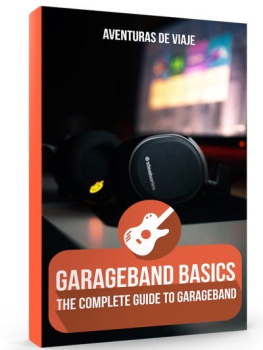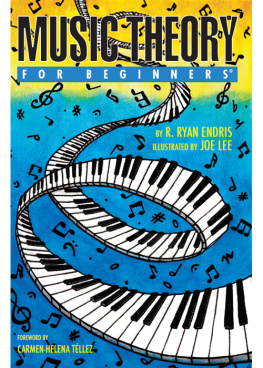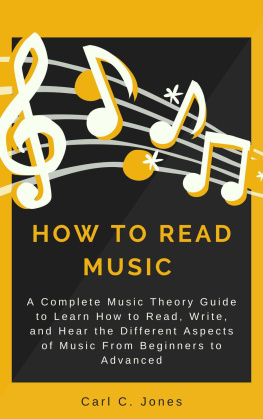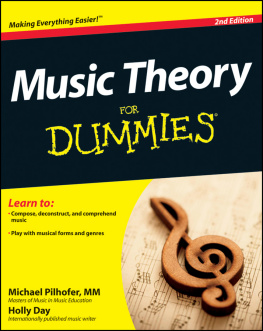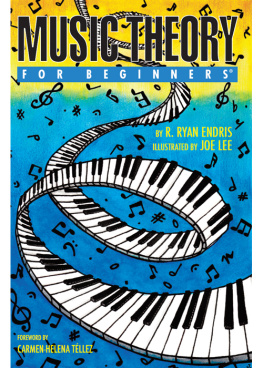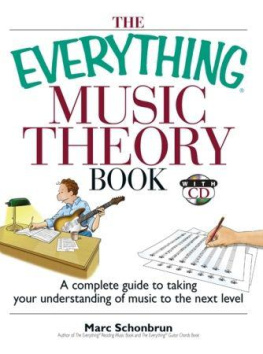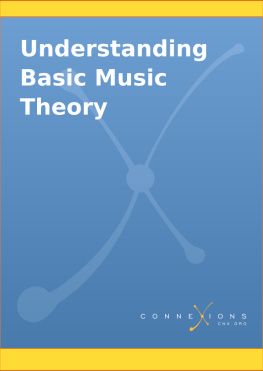How to Read Music in 30 Days
Music Theory for Beginners - with exercises & online audio
Matthew Ellul
School of Composition
Contents
Preface
Welcome to How to Read Music in 30 Days. Im really glad youre here!
Would you like to know what those mystery lines and dots on the front cover mean? Ill tell you... theyre the iconic dun dun dun dunnnn notes from Beethovens 5 th symphony. By the end of this book, youll not only know the name of every symbol, but youll understand exactly what each one does. By the end, youll know how music symbols come together to create all kinds of different music.
Whether you want to compose music, write songs, play for your fans, record in a studio or anything else in music, you need to have a strong foundation in the basics a strong understanding of how music works. This book is your practical, step-by-step guide to building that solid understanding. Youll find that some lessons are easy and quite intuitive while others might require a second reading. This is perfectly normal. As the popular saying goes:
Every expert was once a beginner.
So, take your time with the lessons and progress at your own pace. Well begin from absolute zero, which means that you might encounter some familiar concepts (and thats great!) but I encourage you to refrain from skipping ahead. Read through every lesson and go through the exercises so that you dont miss any important points. Later lessons build on earlier ones.
The book consists of 4 main parts:
From day 1 to day 15 we find out exactly how rhythm works: from basic note durations to beats, simple vs. compound time signatures, upbeats, and more.
From day 16 to day 24 we explore the musical alphabet: we learn all about the different musical pitches and how to notate them correctly. In these lessons we also learn about the keyboard, as its very helpful to visualize the ideas in here.
From day 25 to day 29 we learn all about expression marks. These are symbols and terms that tell musicians how a note should sound. They are important for performers to understand the composers intentions, and theyre important for composers so they make their intentions as clear as possible.
Finally we get to day 30, the final test, which covers every lesson weve been through. This is your chance to test yourself and to see what might need some revision.
Your Free Companion Course
You can read this book as is but to make the most out of it, I recommend signing up to the free companion course at courses.schoolofcomposition.com
There you will find all the audio for the examples, listening challenges, answer key to the exercises, answers to the test, lesson discussions, and other helpful supplements.
You can download the materials to your device or use them online and save your progress. Its your choice.
How to Use this Book
Throughout the book youll find several types of lessons:
Exercises: Every day ends with written exercises. Work them out to test your understanding of that days lesson. The answers are available in our companion course: courses.schoolofcomposition.com
Audio Clips: The musical examples presented throughout the lessons are also available online. You can access them online or download them to use them offline at courses.schoolofcomposition.com . The examples are labeled so its easy to find the ones you wish to listen to.
Lesson Summaries: At the end of every day, the lesson is summarized into a few bullet points. Youll find these useful later as reminders and as references of what the lessons were about.
Expert Tips & Supplemental Lessons: These are shorter articles that tackle questions that frequently come up at that point in the lesson.
Listening Challenges: These are fun activities that will help you train your ear. While the written word and the examples are very effective at showing you these ideas, these challenges allow you to listen for yourself. Music is, after all, a hearing art.
How to Contact the Author
If at some point during your studies you need to contact me, you can do so from
Introduction
What Is Music, Anyway?
Before we begin our study of music theory and musical notation, lets define music itself. We know, of course, that music is made up of sounds. And we also know that these sounds are not usually generated at random but organized in some specific way to achieve some specific musical effect. So music is organized sound.
However, a good definition must not neglect the function of music. When a text was sung by the choirs of the church of ancient times, or a libretto was set to music for an opera of the Italian Renaissance, or a composer wrote a 30 second jingle for a TV advert, music served a specific function. In other words, there is intention behind composing. So I hope that we can agree that one possible definition is that music is sound organized for a purpose .
This is exactly what this book is about. We will see why and how musical sounds are organized and how these same sounds are notated and represented visually.
The Significance of Music Notation
Although nowadays we are used to the idea that music is written down on paper (or presented on a screen), notation didnt appear all of sudden as a complete system. On the contrary, it has a long history of development spanning several centuries.
Before the invention of notation, music was either improvised or painstakingly learned over many repetitions imitating a master. In fact, this is how medieval monks learned and then sang the church hymns at religious ceremonies. Considering the vast number of hymns that had to be sung, however, it took a significantly long time to learn them all. And accounting for human error and interpretation, there was no guarantee that a student would remember the tune exactly as it was taught to him thus making the process longer.
The first step toward a system of musical notation occurred in the 7 th century when Pope Gregory the Great ordered the codification of Christian hymns so that all of Europe could sing from the same hymnbook. The result was the first kind of music notationa primitive set of signs and symbols known as neums . Neums were used to indicate the direction of the melody but they were still quite limited. It was Guido dArezzo, a famous Italian singing teacher of the 11 th century, who came up with the idea of representing notes on lines. He used his new system to teach music quickly to young choristers. Within a few centuries the innovative idea was developed and adopted by virtually everyone.
Notation of music was a hugely important leap forward. It is responsible for the widespread influence of the Western musical tradition. Music that can be written down can be saved indefinitely, transcending time and place. Its spread is no longer dependent on just word of mouth.


